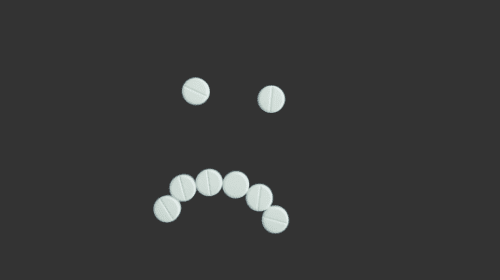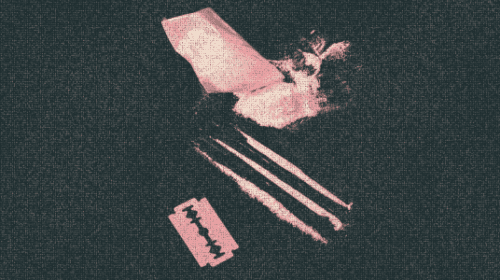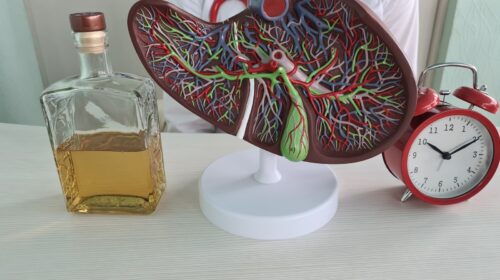Suboxone, a combination of buprenorphine and naloxone, is an opioid medication that can be used to treat opiate addiction. It comes in tablet and sublingual film (strip) form. The latter dissolves in the mouth.
While the ratio of active ingredients and dosage availability is the same for Suboxone pills and strips, there are some key differences to be aware of. Here’s everything you need to know about Suboxone strips.
What Is Suboxone?
Suboxone contains buprenorphine and naloxone. Buprenorphine belongs to the partial opioid agonist category, which can both activate and block opioid receptors. This dual action helps prevent or reduce withdrawal symptoms caused by stopping other opioids and is a key component in opioid dependence treatment.
Naloxone is an opioid antagonist that binds to opioid receptors and can reverse and block the effects of other opioids, such as morphine or heroin. It’s approved by the FDA to reverse opioid overdose rapidly.
Essentially an inactive ingredient when used as prescribed, Naloxone is included in Suboxone to deter misuse. If someone takes too much Suboxone or tries to use the drug form inappropriately, such as trying to crush a pill or dissolve the strips to inject them, naloxone will block the effects and cause withdrawal.
Together, these two drugs can reduce withdrawal symptoms when stopping opioids, helping to prevent relapse and allowing people in recovery to focus on their treatment and therapies without cravings.[1]
What Are Suboxone Strips and How Are They Used?

Suboxone strips are one form of Suboxone designed to dissolve under the tongue or on the inner cheeks. They can take about 6 to 10 minutes to dissolve completely. The active ingredients are then absorbed through your mucosal membranes and into the bloodstream, providing relief for opioid withdrawal symptoms and cravings.
Suboxone strips are orange and thin, so they’re easy to identify. They’re available in the following dosages:[2]
- Buprenorphine 2 mg/naloxone 0.5 mg
- Buprenorphine 4 mg/naloxone 1 mg
- Buprenorphine 8 mg/naloxone 2 mg
- Buprenorphine 12 mg/naloxone 3 mg
Side Effects and Precautions with Suboxone Strips
Like any medication, Suboxone can have negative side effects. For most, these side effects are mild and may mimic opioid withdrawal symptoms.
Some of the common side effects include:
- Insomnia
- Anxiety
- Nausea
- Fatigue
- Headache
- Stomach cramps
- Dizziness
- Excessive sweating
- Flu-like symptoms, such as chills, sore throat, fever, and runny nose
There is a risk of severe side effects, such as:
- Slurred speech
- Reduced sexual desire
- Hives, rash, or itching
- Hallucinations
- Irregular menstruation
- Swelling of the face, hands, feet, or legs
- Breathing difficulties
- Yellowing of the eyes or skin
Contact your doctor if you experience any serious side effects. You should avoid driving or taking part in dangerous activities while on Suboxone until you know how it affects you.
Suboxone sublingual film strips are intended to be dissolved under the tongue or inside the cheek for proper absorption. While they should not be chewed or swallowed, if a dose adjustment is necessary, the strips can be accurately divided under medical supervision to ensure the correct dosage is administered.
Who Should Not Take Suboxone Strips?
Suboxone strips are an effective medication for opioid addiction because they have a low risk for abuse and addiction. However, Suboxone treatment isn’t the right choice for everyone.
Generally, Suboxone may not be ideal for people:
- Under the age of 16
- With asthma or breathing difficulties
- With existing allergies to any Suboxone ingredients
- With serious liver problems
Suboxone may cause complications with certain medical conditions. Make sure to tell your doctor if you have:
- Prostate problems
- A thyroid condition
- Adrenal gland conditions
- Kidney problems
- A history of seizures
- Head injuries
- Mental illnesses like alcohol use disorder (alcohol addiction), depression, or anxiety disorder
How to Take Suboxone Strips
Your healthcare provider will explain how to use Suboxone strips, but here are some general guidelines:
- Store Suboxone strips in a cool, dry place.
- Eat food 15 to 30 minutes before using Suboxone strips to alleviate nausea or upset stomach.
- Make sure there’s no food in your mouth before using a Suboxone strip.
- Sip water to moisten your mouth and help the strip dissolve.
- Wash your hands.
- Open the packet and grasp the strip by its corners.
- Put the strip under your tongue.
- Leave the strip in place. Don’t move the strip, eat, drink, or talk until it dissolves.
- Once the strip has dissolved, take a sip of water.
- Don’t eat or drink anything else for at least 30 minutes.
How Long Does Suboxone Stay in Your System?
The half-life of Suboxone’s active ingredient, buprenorphine, is about 24 to 42 hours.[3] It may take about five half-lives for a substance to completely leave the body, which means buprenorphine can remain in the body for 5 to 8 days.
However, buprenorphine is metabolized by the liver into norbuprenorphine, a metabolite with an estimated half-life of up to 150 hours. This means buprenorphine may be detectable for up to 14 days after the last dose.
The naloxone in Suboxone has a half-life of about 2 to 12 hours, so it can stay in the body for up to 60 hours. However, naloxone is generally eliminated before the buprenorphine.
Several factors can affect how quickly a drug is eliminated by the body, including age, weight, metabolism, Suboxone dosage, frequency of Suboxone use, and liver function.
Suboxone Misuse and Addiction
Suboxone is prescribed for opioid addiction treatment and is formulated to lower misuse potential compared to other opioids. While it contains buprenorphine, a partial opioid agonist that can lead to dependence if not used as directed, the addition of naloxone decreases its abuse potential. Dependence is possible with long-term use; however, when used under medical supervision as part of a comprehensive treatment plan, the risk of misuse and addiction is significantly reduced.
Misusing Suboxone, especially when combined with substances like alcohol, other opioids, or benzodiazepines, increases the risk of adverse effects and potentially dangerous interactions, including respiratory depression and overdose. While Suboxone is formulated to reduce the risk of overdose compared to other opioids, it’s crucial to use it strictly as prescribed and under medical supervision to mitigate these risks effectively.
If you develop physical dependence with Suboxone and abruptly stop using it, you may experience withdrawal symptoms like headache, nausea, and muscle aches. Suboxone should be tapered on a schedule your doctor recommends, not on your own.
The first step in seeking help for Suboxone addiction may be medical detox, which can help manage withdrawal symptoms while ensuring that you are as safe and comfortable as possible.
After detox, you can enter an inpatient or outpatient program to address the underlying causes of misuse and addiction. All treatment programs are individualized, so you may have a range of different therapies to address the thoughts and behaviors that contributed to your addiction and develop healthier approaches.
Seeking Help for Addiction
Suboxone can be an important part of treating opioid addiction, but it needs to be part of a comprehensive treatment program that includes counseling and therapies. In addition, Suboxone can be habit-forming on its own.
If you or a loved one is struggling with drug addiction or misuse, seek help from an addiction treatment center as soon as possible. Both opioids and Suboxone can lead to severe withdrawal symptoms if you try to quit on your own.

























